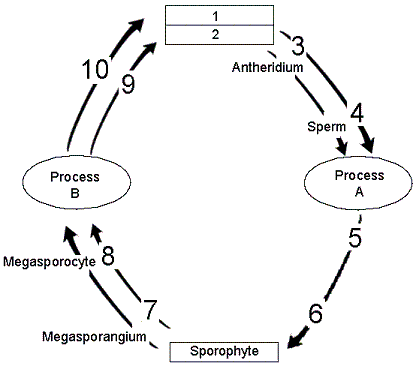Which of the following mechanisms is the most common by which penicillin resistance occurs?
a. prevention of penetration within the microbe
b. ejection of the antibiotic by a pump mechanism
c. alteration of the drug's target site or receptor
d. inactivation of the drug by an enzyme
Ans: d. inactivation of the drug by an enzyme
You might also like to view...
The life cycle in Figure 27-3 could represent:

a. a moss.
b. a whisk fern.
c. a club moss
d. a horsetail.
e. a liverwort.
Glomerular capillary walls and podocytes form a ____ that allows fluid and small solutes in plasma to pass through
and become part of the filtrate. a. glomerular filtrate b. tubular transport c. renal threshold d. filtration membrane e. filtration slits
Radiation can have both positive and negative impact on humans.
Answer the following statement true (T) or false (F)
Which of the following dilution schemes results in a 1:100,000 dilution? (Choose all that apply)
> Step 1: transfer 1ml from the original sample to flask A with 99ml diluent; step 2: transfer 1ml from flask A to flask B with 99ml diluent; step 3: plate a 0.1ml sample from flask B > Step 1: transfer 1ml from the original sample to flask A with 9ml diluent; step 2: transfer 1ml from flask A to flask B with 9ml diluent; step 3: plate a 1ml sample from flask B > Step 1: transfer 0.1ml from the original sample to flask A with 9.9ml diluent; step 2: transfer 0.1ml from flask A to flask B with 9.9ml diluent; step 3: plate a 0.1ml sample from flask B > Step 1: transfer 10ml from the original sample to flask A with 90ml diluent; step 2: transfer 10ml from flask A to flask B with 90ml diluent; step 3: plate a 1ml sample from flask B